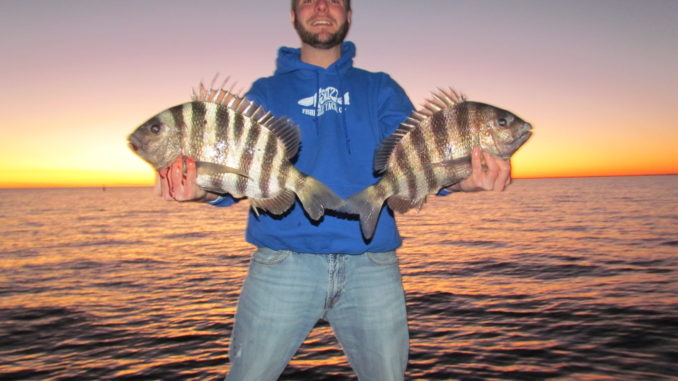
Fishing vertically around reef structure can produce plenty of sheepshead.
If Mother Nature turns off the fan and lets the bumpy seas subside, Murrells Inlet anglers can cure cabin fever right on their doorsteps. All those sheepshead that make inshore waters home most of the year are living around a handful of artificial reefs in sight of the Myrtle Beach skyline, and they won’t be their normal, finicky selves.
With their spring spawn on the horizon, sheepshead that move into the ocean as the water cools in the fall will eat just about anything they can get in their mouths. And while some of them will be around reefs in 100 feet of water, the majority will stay close to shore, hanging around the massive schools of lunker black sea bass that move in to take over nearshore reefs during the winter.
Any baitfish or small crustacean that lives anywhere close to one of these reefs will quickly turn into a meal, and sheepshead will clean the barnacles off the artificial structures — almost all of which will hold a decent population of fish this month. But some reefs will be better than others.
Capt. Ned Campbell of R & R Charters looks for sheepshead round reefs with good vertical structure just a hop and a skip away from the Murrells Inlet sea buoy.
“There are quite a few to choose from, but choose the reefs with structure over just livebottom,” said Campbell (843-460-0186). “The best reefs are the ones inside of a 10- to 15-mile radius of shore and in 60 foot of water or less.”
From the jetties at Murrells Inlet, anglers have many choices close enough for a 10- to 15-minute boat ride: the Eleven-Mile Reef, Paradise Reef, Pawleys Reef, North Inlet Reef, Georgetown Reef and the Georgetown Nearshore Reef. Off to the north in front of Little River Inlet lies the General Sherman wreck and the Jim Caudle Reef, both spectacular places to find winter sheepshead — not to mention black sea bass.
“Sea bass will tear you up, along with a few other bait stealers,” said Campbell, who will move to different areas around a sprawling reef if he can’t get his baits through the black sea bass down to the sheepshead.
“It is critical to locate the schools of sheepshead. Pay close attention when you catch a sheepshead and fish that place hard,” Campbell said. “Most of the local wrecks are big and have lots of different components. Move around some and fish different parts of the reef until you find a group of sheeps.”
Capt. Englis Glover of Tee To Sea Charters is an old salt when it comes to fishing for winter sheepshead in the ocean. He always expects to run into black sea bass before he gets on a solid sheepshead bite.
“As long as the water temperature is below 65 degrees … they are on any structure at all of the local reefs,” says Glover. (843-655-5459) “You may have to bounce around some to get away from the black sea bass, but the black sea bass will be legal this year and anglers can fill the box with some of those big bass if the sheepshead aren’t cooperating.”
Sheepshead eat a wide variety of foods, but most of their favorite meals are enclosed in their own hard shell: oysters, clams, mussels, barnacles and fiddler crabs. Their large, block-like teeth and a set of powerful jaws allow them to eat just about anything the ocean has to offer in a small armament.
Glover relies on fiddler crabs but said he will use barnacles or marsh mussels scraped off pilings and floating docks before he leaves the inlet. Other fishermen partially boil or steam clams and oysters to toughen the flesh and make it stay on the hook better.
One factor that tilts the field in the angler’s favor is that sheepshead have been on the reefs since late fall, and toward the end of the winter, their food sources become depleted, causing more competition for available meals and a more aggressive bait from fish that are notoriously finicky when they’re living inshore.
Glover and Campbell both prefer using jigheads over traditional rigs to put sheepshead in the boat while fishing in the ocean.
“I love the Fishizzle Meal Ticket jighead. The direct connection to the bait allows us to feel the bite much better than the typical Carolina rig or chicken rig set-up,” Glover said. “Depending on the current and water depth, I will use anywhere from 1/2-ounce up to the 3-ounce size.”
A traditional Carolina rig with a short, stubby leader will still catch sheepshead if a jighead is a little too unorthodox for some anglers. Campbell advises anglers to use no more than three to four inches of fluorocarbon or monofilament leader and just enough weight to insure a good feel.
“The straighter up and down your line, is the more you will be able to feel the light bite,” he said.
Always keep good contact with the line, falling or on the bottom. Sheepshead will pick up the bait on the drop just as often when it’s resting on the reef structure. Campbell raises and lowers the bait very slowly, always maintaining close contact and feel. If he detects any resistance or a sudden lack of resistance, he immediately sets the hook.
“If you let the bait get away from you, allowing it to go slack, you may lose the bite,” he said.
Look for a slick, calm day and make sure to bring plenty of bait. A fishermen targeting sheepshead can go through a cup of fiddler crabs in record time when the sheepshead and black sea bass are famished.
DESTINATION INFORMATION
WHERE TO GO/HOW TO GET THERE — Murrells Inlet is at the southern tip of the Grand Strand, easily accessible from US 17 via US 17 Business, where a public boat ramp is just south of the famous restaurant district. From there, head for any of the nearshore wrecks off the beach in 60 feet of water.
WHEN TO BE THERE — Sheepshead move to nearshore reefs when inshore water temperatures drop below 60 degrees and will stay through the winter, heading back in for the spring spawn. Any time between December and April can be ideal in the ocean.
BEST BAITS/TECHNIQUES — China-back fiddler crabs and marsh mussels are the baits of choice year-round. For best results, anchor directly over the reef structure and move around until you find a concentration of fish. Chumming crushed oysters and barnacles is very effective, either tossed overboard or placed in a chumming device in the lower half of the water column. Move around and wade through the black sea bass schools until a school of sheepshead is found.
TACKLE/GEAR — Medium-heavy baitcasting rods are preferred for presenting baits vertically to sheepshead around nearshore reefs. Use a strong, braided line on the reel with a leader of 25-pound fluorocarbon. Carolina rigs with a short leader, drop-shot rigs with a 3-way swivel and jigheads are different ways to present baits. Try to use the lightest weight or jighead possible.
GUIDES/FISHING INFO — Capt. Englis Glover, Tee To Sea Guide Service, Captain Englis Glover, 843-655-5459, www.teetoseafishing.com; Capt. Ned Campbell, R & R Charters, 843-460-0186, www.murrellsinletfishingsc.com; Perry’s Bait & Tackle, 843-651-2895; Pawleys Island Outdoors, 843-979-4666. See also Guides and Charters in Classifieds.
ACCOMMODATIONS — Hampton Inn, Murrells Inlet, 843-651-6687; Myrtle Beach Area Convention and Visitors Bureau, www.visitmyrtlebeach.com; South Carolina Association of Visitors Bureaus, www.discoversouthcarolina.com.
MAPS — Navionics, 800-848-5896, www.navionics.com; Waterproof Charts, 800-433-9026, www.waterproofcharts.com; SeaLake Fishing Guides, 800-411-0185, www.sealakeusa.com.

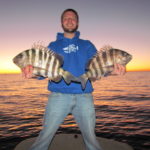
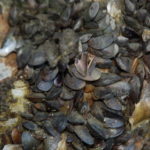
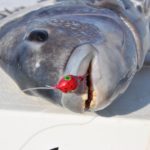
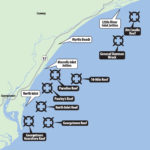



Be the first to comment